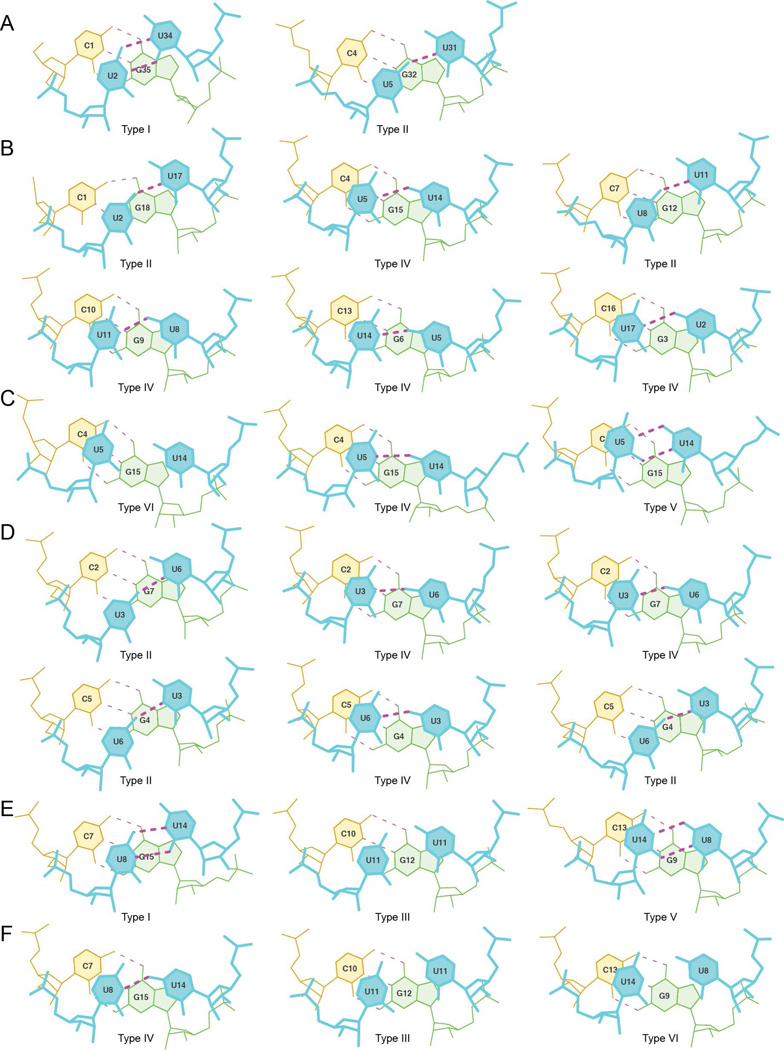Figure 3.
Comparison of non-canonical U-U pairs in the context of CUG repeats. (A) Lower and upper non-canonical U-U pair of trCUG-3. The upper U5-U31 non-canonical pair forms the more typical (in the context of CUG repeats) one hydrogen bond, while the lower U2-U34 non-canonical pair forms two hydrogen bonds, shortening the C1’-C1’ distance. (B) Non-canonical U-U pairs of the de-twinned (CUG)6 structure. All non-canonical U-U pairs in this structure form one hydrogen bond, maintaining the C1’-C1’ distance typical of a Watson-Crick interaction. (C) Non-canonical U-U pairs from the NMR structure of CCGCUGCGG, forming zero, one, or two hydrogen bonds. (D) Non-canonical U-U pairs from G(CUG)2C crystal structure. The first column contains the non-canonical U-U pairs in duplex A+B, the second contains C+D and the third contains E+E*. Every non-canonical pair within the G(CUG)2C crystal structure forms one hydrogen bond. (E–F) Noncanonical U-U pairs from UUGGGC(CUG)3CUCC pdb entry 3SYW (E) and 3SZX (F).

